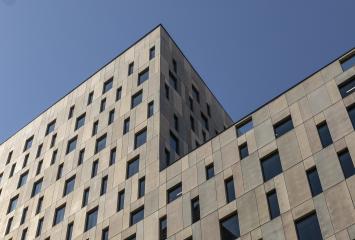Decoration and modular furniture: multiple combinations, uses, and styles.
The human-centric approach, primarily focused on satisfying people, has been completely redefining office design in recent years. Among all its innovative elements aimed at increasing workers' well-being in work environments, one of the most prominent is undoubtedly the replacement of conventional furniture with much more versatile modular furniture. Thus, a sofa, an armchair, or a modular table consists of small mobile units that allow each person to reconfigure the furniture according to their needs and desires. Although its features often go much further.
Posibilities of modular furniture
That a sofa allows the user to move a piece to sit or lie down differently or oriented towards a different area is very advantageous. Especially in open environments that seek to encourage interaction and relaxation, which is key to creativity and the development of new ideas. But many modular furniture pieces enable much more than simple reconfiguration. Additionally, we find in the market modular options that can be easily moved from one area to another, that can be resized to adopt different sizes, and even that can be aesthetically customized to fit individual criteria.
In this sense, and in light of all these possibilities, companies are including furniture of this modality in key areas, such as the informal collaboration area, the rest area, the recreational area, or the meeting area. Ultimately, all spaces can benefit from the presence of modular furniture. Furthermore, beyond the individual satisfaction of each worker, these furniture pieces offer the company the possibility to easily change according to its needs, whether they are practical or related to brand image. One day the office could have one look and utility. The next day, it could show a very different face.
Practical and aesthetic benefits of modularity
Modularity is so convenient that it's not limited to the design of sofas, office chairs, or work tables. It's also affecting other aesthetic and organizational structures of offices, such as walls. Thus, many of these environments already have changeable and movable walls, which allow spaces to be constantly rethought. Together, these modular furniture and walls offer obvious practical benefits such as flexibility, adaptability, space optimization, and the promotion of fluid communication and collaboration. There are no insurmountable barriers. There are no irreversible arrangements.
But the benefits are also aesthetic. The geometries, textures, and colors enabled by modular furniture help the company to stay fresh and promote the comfort of its workers, who can adjust their surroundings to get closer to their ideal workspace. Additionally, we cannot overlook that modular design serves as a remedy against visual monotony, which increases the enthusiasm and motivation of the people occupying the office. That small touch of daily, weekly, or monthly novelty is a relief for the brain and an invitation to creativity. It should be embraced.

